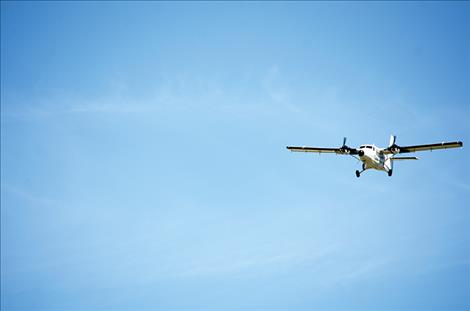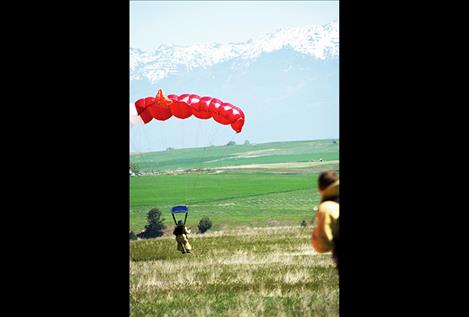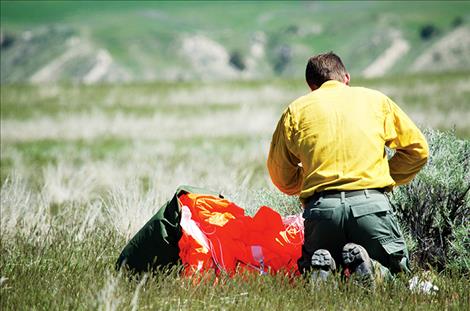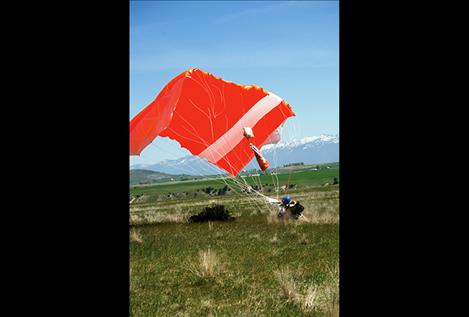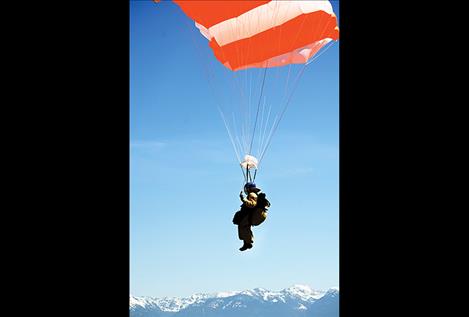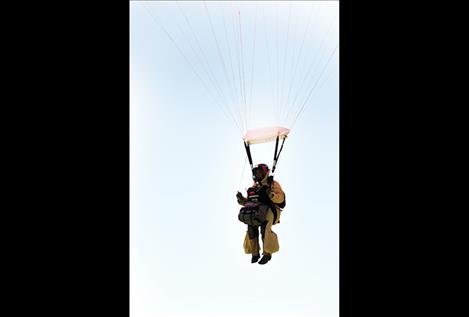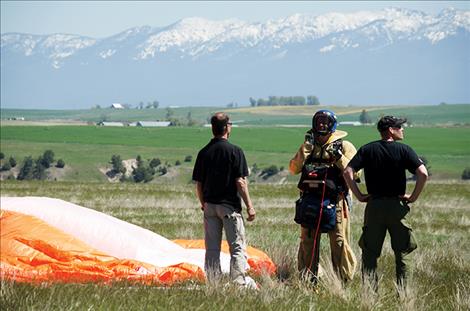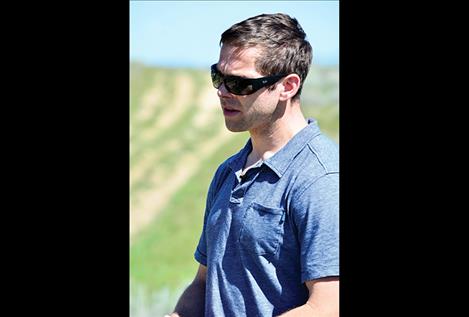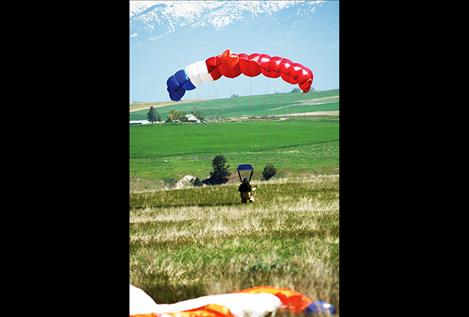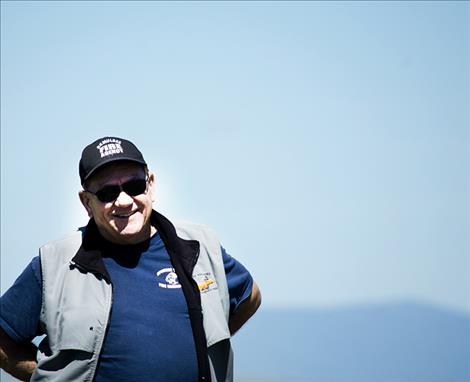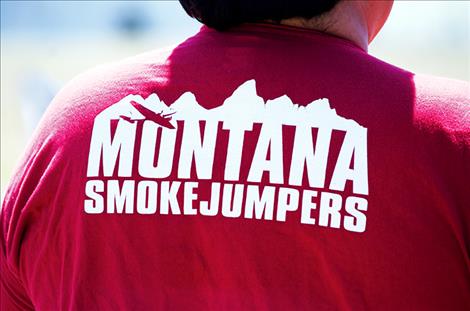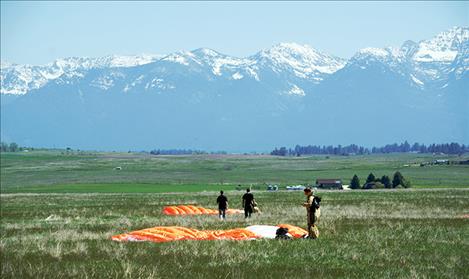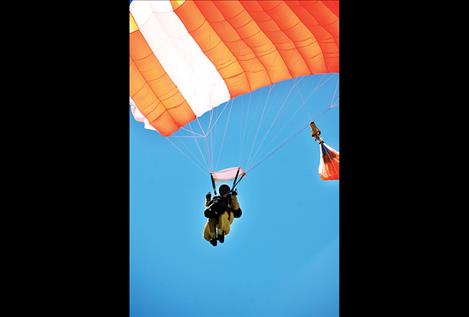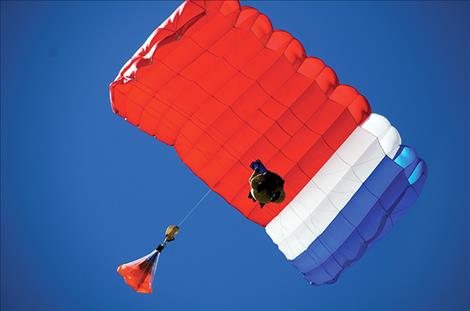Smokejumpers drop down on local field
Hey savvy news reader! Thanks for choosing local.
You are now reading
1 of 3 free articles.
RONAN – Thousands of feet above an open field a group of anxious firefighters sat in a Twin Otter aircraft waiting for their turn to jump. Missoula Smokejumpers were training the rookies.
“This is their first jump,” said Kurt Rohrbach, veteran smokejumper, as he stood on the ground last Wednesday looking up at the plane.
The DH-6 series Twin Otter circled above the field then headed toward the Mission Mountains to test the wind. After a low pass across the field, a set of streamers was dropped down to find out which way the air was moving. “Today the wind is minimal,” he said. “It’s a good day to jump.”
Smokejumpers have utilized this same field near Sloan Bridge as a place for rookies to take their first jump for the past few years. It’s wide open and flat. Rohrbach said Missoula doesn’t have a lot of property that isn’t privately owned and landing in someone’s backyard could be a problem. The Confederated Salish and Kootenai Tribes worked with the Missoula Smokejumpers to organize the training jump.
CSKT Division of Fire Manager Bob McCrea was at the jump site to help. He said the Missoula Smokejumpers have helped with fires on the Flathead Indian Reservation for years. "All the agencies fighting fires are intertwined,” McCrea said. “No one agency can do it alone.”
The rookies are tasked with jumping out of the plane alone, pulling their parachutes, and landing on the ground as close as possible to an orange tarp about the size of a twin bed sheet that probably looks more like a speck of dirt from 4,000 feet up in the air.
The goal is to train the rookies so they can land in remote wilderness areas to put out fires. They are often flown to places all over the country to build fire lines around small fires to keep the flames from growing into a massive wildfire, and it takes an intense five to six week training course to have the skills to do it, according to rookie trainer Travis Parker.
“Basically, we are giving them a toolbox, and in that toolbox are a hammer and a screwdriver, but towards the end of the training they’ll have an assortment of tools to be able to successfully navigate themselves to that jump spot,” he said.
During the first week of field training, rookies have to be able to carry a 110-pound pack filled with survival gear, which is what smokejumpers usually carry, learn to use a crosscut saw, and climb trees. They start jumping out of planes after the second week. After the first jump, they move into more remote areas.
Only the best of the best who are top physical condition get into the smokejumper program. Rohrbach said about 400 firefighters applied for the training program this year and only 15 were chosen. On average, about 20 firefighters complete the training annually.
Rohrbach said he has jumped out of a plane about 200 times. He recalled the anxiety he felt during his first jump fifteen years ago when he said of his rookie jumpers, “I bet they have knots in their stomachs; there was in mine.”
After the plane circled around again, dropped a second set of streamers to double check the wind’s movement, rookie trainer Mike Dunn jumped first to make sure the wind calculations were correct. He landed smoothly on the ground wearing a protective Kevlar suit.
The plane made another circle around and came back over the field to drop off the first rookie. He looked like a tiny boat floating on an ocean of blue sky several thousand feet up.
The smokejumpers and crew watching him were quiet as he floated down. Within a minute, his orange parachute opened. As he came down closer to the landing site, the color of his yellow suit became visible, and he dropped down to the ground, landing a bit harder than the trainer. He put his thumb up to signal that he was okay. He said a few words with the parachute falling around him: “That was awesome!” One after the other, the remaining rookies safely jumped to the ground.
Rohrbach said the reason smokejumpers do such harrowing work is twofold: because they want to help people and the environment and because they love it.
















